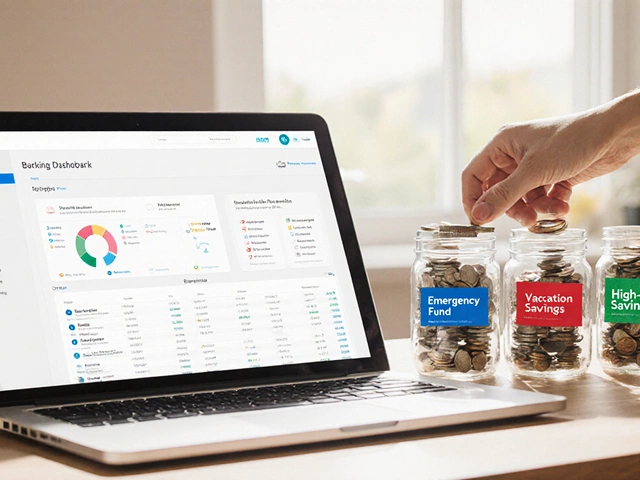
Indian Startup Funding Calculator
Calculate Your Seed Funding Needs
Determine how much seed funding you should target based on your business needs.
Key Takeaways
- In FY 2024‑25 Indian startups raised roughly₹1.8trillion (≈$22billion) across all stages.
- Government‑backed schemes contributed about₹120billion, while private VC firms supplied the bulk of late‑stage capital.
- Seed‑stage funding averaged₹45million per deal, growing 18% YoY.
- Fintech, health‑tech, and AI‑driven enterprises accounted for over 60% of total capital.
- Average round size jumps from₹45million (seed) to₹850million (SeriesC+).
When you hear the phrase Startup funding in India is a broad term that covers capital raised from private investors, government programs, and corporate funds. It tracks how much money new companies receive to build products, hire teams, and scale operations.
Understanding the flow of capital helps founders set realistic fundraising goals, investors compare market health, and policymakers tweak support programs. Below we break down the latest figures, explain where the money comes from, and show how stage‑wise funding has shifted over the past three years.
What the Numbers Look Like in 2025
According to the Ministry of Commerce’s annual Startup Funding Report 2025, Indian startups secured ₹1.8trillion in total funding for the fiscal year ending March2025. Converting at the current exchange rate (₹82/USD) that’s about$22billion.
Here’s a quick slice of the data:
- Seed stage: 1,240 deals, average size₹45million, total₹55billion.
- SeriesA: 540 deals, average size₹250million, total₹135billion.
- SeriesB: 310 deals, average size₹600million, total₹186billion.
- SeriesC+: 95 deals, average size₹850million, total₹81billion.
The remainder-roughly₹1.34trillion-came from later‑stage exits, secondary market sales, and debt‑based financing.
Who’s Putting Money on the Table?
Funding sources fall into four buckets:
| Source | Typical Deal Size | Key Players |
|---|---|---|
| Venture Capital (VC) | ₹200million - ₹2billion | Sequoia Capital India, Accel, Nexus Venture Partners |
| Angel Investors | ₹10million - ₹150million | Ratan Tata, Sanjeev Bikhchandani, Anupam Mittal |
| Government Schemes | ₹5million - ₹500million | Startup India Seed Fund, Fund of Funds for Startups (FFS) |
| Corporate Venture Arms | ₹100million - ₹1billion | Reliance Jio, Tata Capital, Mahindra & Mahindra |
In 2025, VCs accounted for about65% of total capital, angels 12%, government programs 7%, and corporate arms 16%.
Government’s Role: From Policy to Pocket
The Indian government has built a multi‑layered support system aimed at de‑risking early‑stage funding. The three most impactful initiatives are:
- Startup India Seed Fund (SISF): Managed by the Department for Promotion of Industry and Internal Trade (DPIIT), it disburses up to₹10million per startup. In FY2024‑25 it funded 420 companies, injecting₹4billion into the ecosystem.
- Fund of Funds for Startups (FFS): A ₹10billion pool that invests in vetted VC funds. By end‑2025 the FFS had allocated₹7.8billion across 32 funds, indirectly supporting over1,200 startups.
- India Innovation Fund (IIF): Launched in 2023 to target deep‑tech ventures. It offers up to₹250million per company, with a focus on AI, quantum computing, and clean energy.
The government’s share may look modest compared to private capital, but its strategic focus on high‑risk sectors helps fill gaps that commercial investors shy away from.

Stage‑by‑Stage Funding Dynamics
Each funding round has a distinct purpose and typical investors. Below is a snapshot of the most common round types and who tends to lead them.
| Stage | Lead Investor Type | Average Deal Size (₹) |
|---|---|---|
| Pre‑seed | Friends & Family, Angel | ₹5million - ₹15million |
| Seed | Angel, Early‑stage VC, SISF | ₹45million - ₹120million |
| SeriesA | Mid‑stage VC, Corporate VC | ₹250million - ₹500million |
| SeriesB | Late‑stage VC, Fund of Funds | ₹600million - ₹1.2billion |
| SeriesC+ | Private Equity, Strategic Investors | ₹850million - ₹3billion |
Notice how the average size jumps dramatically after SeriesA. That’s a sign investors expect a proven product‑market fit before committing larger sums.
Sectors Riding the Funding Wave
Not all startups attract the same amount of money. Data from the National Startup Index 2025 shows the top three sectors by total capital received:
- Fintech: ₹360billion (20% of total) - driven by digital payments, neobanking, and lending platforms.
- Health‑tech: ₹280billion - telemedicine, health‑AI, and pharma‑tech.
- Artificial Intelligence & Machine Learning: ₹240billion - SaaS AI, computer vision, and robotics.
These industries benefit from both a large addressable market and clear regulatory pathways, making them attractive to both private VCs and government programs.
How to Benchmark Your Funding Needs
If you’re a founder wondering how much money you should chase, start with a simple three‑step calculator:
- Estimate runway: Multiply monthly burn (₹) by the months you need to hit key milestones (usually 12‑18 months).
- Add one‑time costs: Product development, legal fees, and go‑to‑market campaigns.
- Factor dilution: Decide the equity you’re willing to part with. Typical seed rounds give away 10‑15%.
For example, a fintech app with a ₹2million monthly burn, a 15‑month runway, and ₹30million one‑off costs would target roughly ₹60million in seed funding, leaving room for ~12% equity dilution.

Common Pitfalls and How to Avoid Them
- Chasing the wrong round size: Raising too much too early dilutes founders and creates pressure to deploy capital inefficiently.
- Ignoring government schemes: Many founders skip SISF or FFS because they assume the paperwork is burdensome, yet the application process has been streamlined to under two weeks.
- Over‑relying on a single investor type: Diversify your cap table early. A mix of angels, VCs, and corporate investors reduces dependency.
Future Outlook: What’s Next for Indian Startup Funding?
Looking ahead to FY2026‑27, several trends could shift the numbers:
- Increased SEBI regulation: The Securities and Exchange Board of India is drafting tighter reporting standards for private placements, which may raise compliance costs but improve transparency.
- Rise of ESG‑focused funds: Global investors are earmarking capital for environmentally sustainable Indian startups, opening a new pool of capital.
- More cross‑border exits: With US and European VCs eyeing Indian unicorns, secondary market liquidity could boost overall funding figures without new primary rounds.
Overall, the ecosystem remains vibrant, with capital supply outpacing demand in most sectors. For founders, the key is to align their fundraising timeline with these macro‑signals.
Quick Checklist for Indian Founders
- Validate product‑market fit before approaching SeriesA.
- Prepare a concise pitch deck (10 slides max).
- Research relevant government schemes early - many have application windows aligned with the fiscal year.
- Know your target valuation and dilution ceiling.
- Maintain clear financial reporting to satisfy SEBI and potential investors.
Frequently Asked Questions
What is the average seed‑stage funding amount in India?
In FY2024‑25, seed‑stage deals averaged around₹45million (≈$550,000) per company, marking an 18% increase from the previous year.
How can a startup apply for the Startup India Seed Fund?
Applications are submitted through the Startup India portal. Required documents include a detailed business plan, financial projections, and proof of incorporation. The review process typically takes 10‑14days.
Which sectors are currently receiving the most venture capital?
Fintech leads with about20% of total VC money, followed by health‑tech and AI‑driven startups. Together they account for roughly60% of all funding.
What is the role of the Fund of Funds for Startups (FFS)?
FFS acts as a government‑backed pool that invests in vetted venture capital funds rather than directly in startups. This indirect approach spreads risk and leverages VC expertise.
How does SEBI regulation affect private startup funding?
New SEBI draft guidelines require detailed disclosure of valuations and investor eligibility for private placements, aiming to protect minority shareholders and improve market transparency.
Understanding the flow of Indian startup funding helps you set realistic expectations, choose the right partners, and stay ahead of policy shifts. Keep an eye on sector trends, leverage government support early, and plan your runway carefully-those steps turn numbers on a chart into real growth for your venture.








Write a comment